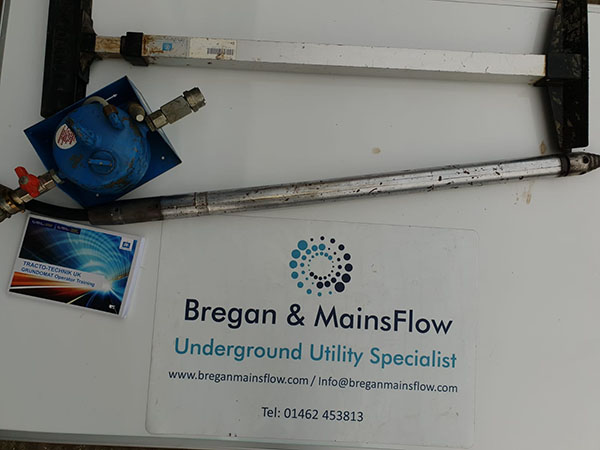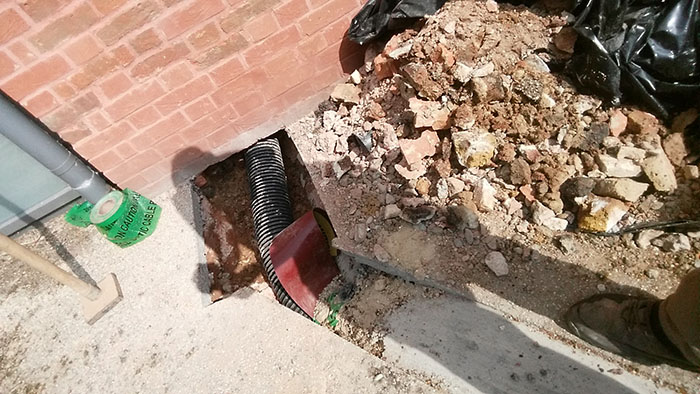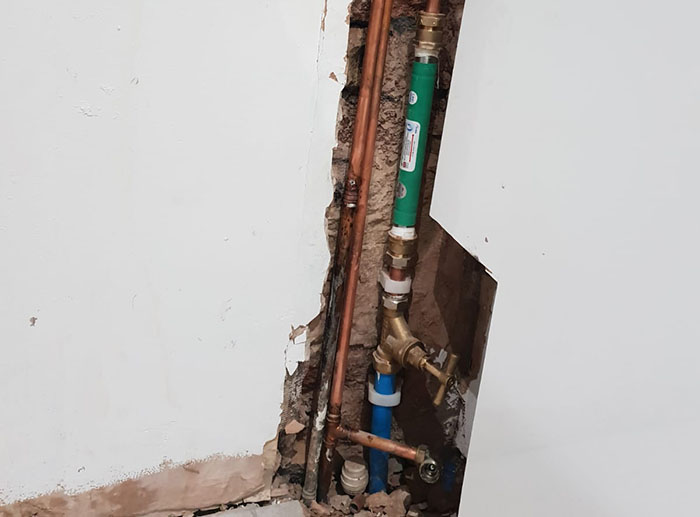Self-lay
If a development requires a new water main or sewer, you may ask the water or sewerage company to install the pipework. Alternatively, you may choose your own contractor to do the work, which is known as self-lay. The water company will take over responsibility for (adopt) self-laid pipes that meet the terms of its agreement with the developer or self-lay organisation (SLO) that carries out the work.
Self-lay process
The process for using self-lay is laid out in the stages below. Either the developer, or a self-lay organisation (SLO) can project manage the process.
1. Advanced enquiry stage
The developer or the SLO makes contact with water company to confirm the feasibility of supplying the proposed development and provides the information necessary for the water company to do a technical evaluation. The water company confirms its ability to supply, and specifies the point of connection and validity period of the information.
2. Application stage
The developer or SLO makes a full application by submitting all the required information, together with a completed application form to the water company.
3. Design stage
The developer or SLO either submits the design of the water network to the water company for vetting, or the developer or SLO requests that the water company designs the water network.
The water company sends details of the estimated asset payment, non-contestable charges, security and legal agreement to the developer or SLO.
4. Self-lay notification
Following the pre-start meeting
return of signed legal agreement
payment of relevant charges
the developer or SLO submits the notification to start to lay mains to the water company.
5. Main-laying installation
The SLO constructs new water mains, notifying the water company of any changes and of the intended testing and disinfection dates. The water company audits and inspects construction, and may witness testing of the new main.
6. Main-laying completion
The SLO completes main-laying to the required specification and rectifies any defects identified during the inspection and audit. The SLO provides the water company with the ‘as laid’ drawings and test certificates. The water company arranges the main connection, issues the vesting certificate and makes the asset payment to the developer or SLO. The maintenance period starts from date of commissioning.
7. Service connection notification
The Developer or SLO submits notification to lay services in accordance with the water company’s self-lay arrangements. The notification is only issued after the developer or SLO confirms that the private pipework has been checked or self-certified as meeting the Water Supply (Water Fittings) Regulations.
8. Service connection installation
The SLO makes the service connections in accordance with the previously issued notification, and either fits water meters or requests that the water company fits meters. The SLO then provides fill details of each connection, including the postal address, and meter details (if fitted) to the water company.
9. Protection of installed apparatus
The developer or SLO makes sure that all installed apparatus is protected against damage until the development is completed and roads or footpaths are fully constructed.
Accreditation
Before a self-lay organisation can carry out work, they must be approved by the relevant water company. Self-lay organisations can avoid having to comply with the 22 separate water companies’ requirements by becoming accredited under the Water Industry Registration Scheme (WIRS) which is recognised by all the water companies and Water UK.
Under WIRS, Lloyd’s Register carries out technical assessments of the service providers who elect to be accredited for contestable works associated with installing water infrastructure.
Areas covered by WIRS include:
Lloyd’s Register offers an independent assessment and registration process that includes assessing the self lay organization’s management procedures and processes. Lloyd’s Register maintains a current list of WIRS-accredited self-lay organizations. Click Here
WIRS plays an important part in supporting and expanding the self-lay market, as it promotes and ensures compliance with the highest standards of water infrastructure installation and the essential protection and maintenance of water quality.









